A "u-joint", or universal joint, is a coupling that connects two shafts that are at different angles to one another, in a fashion that allows both to rotate freely without excess friction. Essentially, a u-joint is formed from multiple pieces - some of which are permanently attached to the ends of the shafts themselves. U-joints can be located along driveshafts, 4WD transfer case shafts, and even axle shafts. U-joints are different in design from constant velocity joints, and are sometimes referred to as Cardan joints or Spicer Joints.
Because u-joints are under high stress loads and friction, they can wear out and fail due to improper lubrication or abnormal operating conditions such as overloading or incorrect operating angles. Noticeable warning signs that failure may be imminent are binding, clunking, and squeaking of the driveshaft along with increasingly rough vibrations. When a u-joint fails completely, one end of your driveshaft will fall to the pavement - leaving you stranded and in need of a tow.
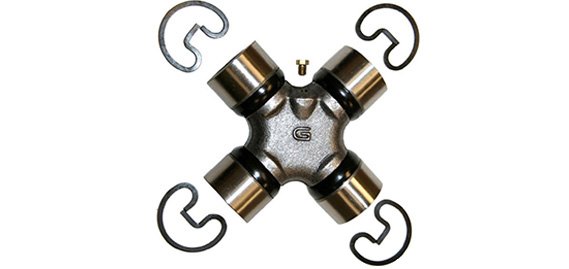
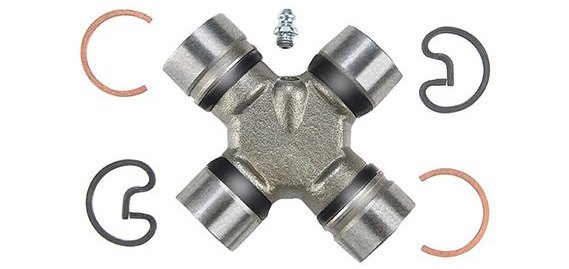
If the time has arrived to replace a u-joint, rest easy - because you've come to the right place. In this article, we'll help you decipher the terms you'll come across, provide important selection tips, and provide a brief overview of the installation process. We'll start by saying that everything we sell in the Universal Joints and Components section of our website is vehicle-specific, meaning that all parts have been designed with the exact dimensions, strength, and shape needed to work on your exact vehicle.
Once you've entered year, make, and model, anything you see available in our Product Options field will be applicable for your vehicle. We recommend a look through the terms below, because they'll give you a good understanding of what a u-joint is and how it works. Refer to them as often as you need to, because you may come across some of them while making a product selection.
Terms For Items Related To U-Joints
At Rear Axle
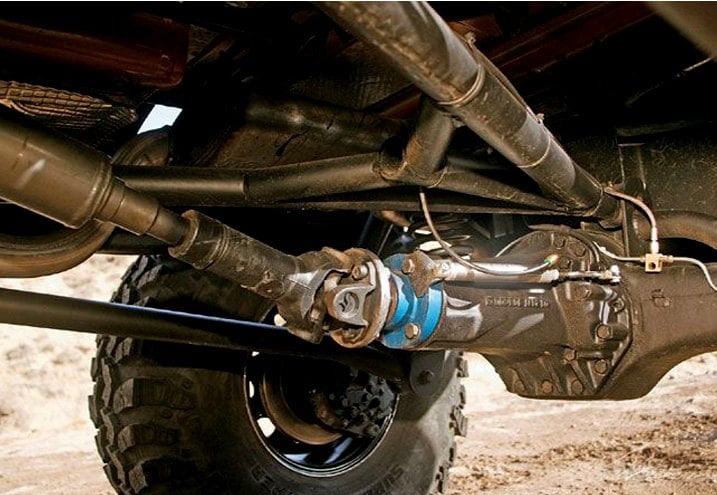
A descriptive term for a u-joint that links the rear of the driveshaft to a vehicle's rear differential.
At Transmission
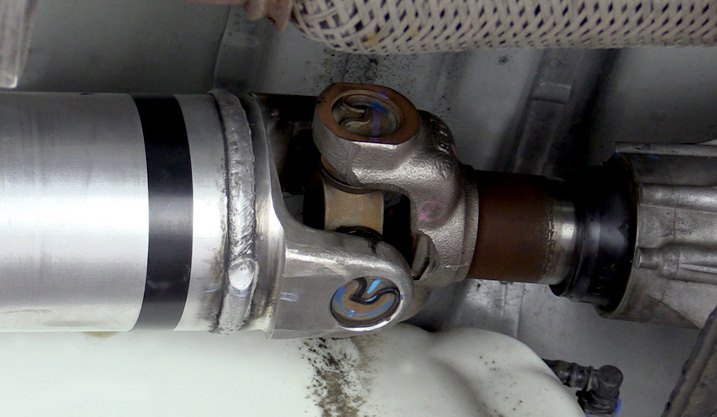
A descriptive term for a u-joint that links the front of the driveshaft to a vehicle's transmission output shaft.
Bearing Cap (or Bearing Cup)
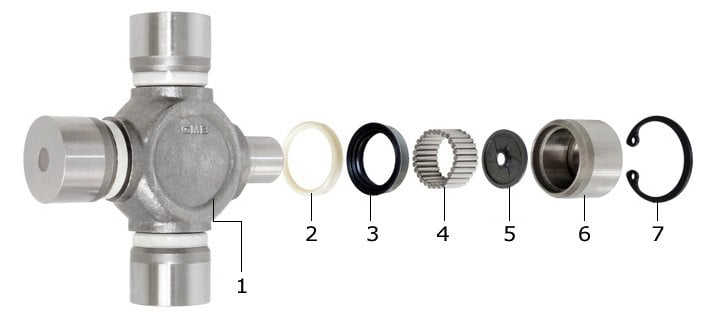
These fit on the ends of each of the + shaped cross pieces in a U-joint assembly, and are secured with snap rings around their outer edge. Refer to Item #6 in the above illustration. Inside the caps are small seals, roller bearings, and washer pieces. The caps are packed with lubricating grease to prevent heat buildup and part failure.
Bearing Cap Diameter Measurement
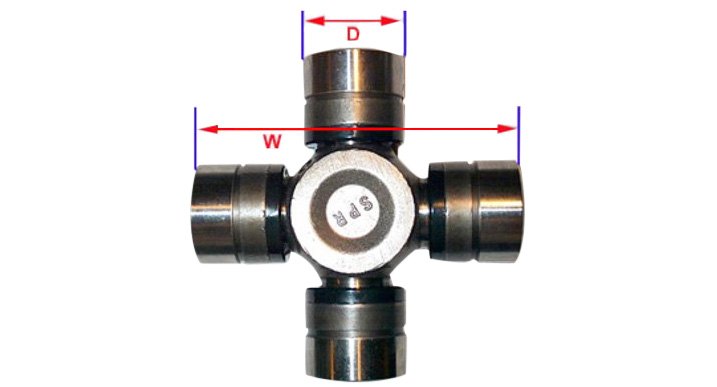
Shown in this picture marked "D", bearing cap diameter is the measurement across the outside center point of the cap piece. In our Product Options field, you may be prompted to choose from several OEM sizes if multiple ones existed for your vehicle make and model.
Cross Piece

This is the 4-pronged center section of a universal joint. This picture shows cross pieces without bearing caps or snap rings attached.
CV Joint (Constant Velocity Joint)
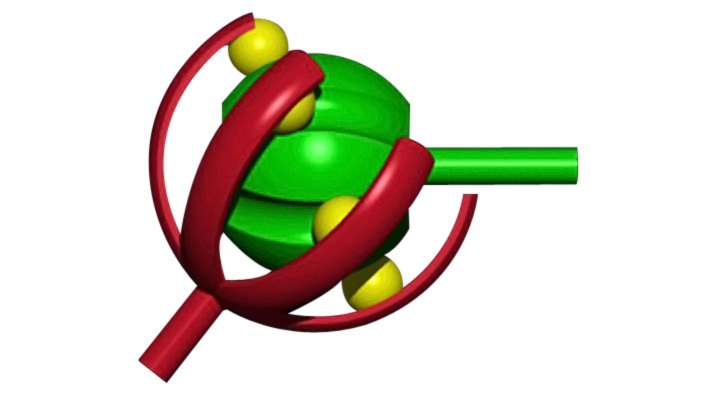
A type of universal joint used mostly on axle shafts found on vehicles with independent suspension setups, where the range of up-and-down wheel travel is greater. At the end of the axle shaft is a ball-shaped piece, and at the end of the shaft connected to the wheel is a cup-shaped piece. Between the two pieces are ball bearings that allow a freer range of pivoting with less buildup than traditional universal joints. These two pieces are joined together, with ball bearings in between.
CV joints are mostly found on front-wheel-drive vehicles because they can best accommodate steering angle variations in addition to up-and-down wheel travel. Unlike traditional UV joints, CV joints are fully encased in a rubber boot in order to prevent the lubricating grease they are submerged in from escaping. Many modern rear-wheel-drive cars with independent rear suspension setups use CV joints at the ends of rear axle half-shafts as well as driveshafts.
Driveshaft
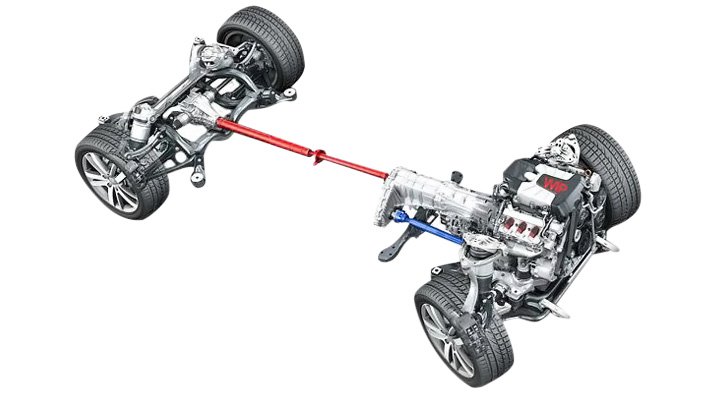
A rigid metal shaft that transmits rotational force from a power source to the drive wheels of a vehicle, or to/from a transfer case that controls the drive wheels. Also described as a propeller shaft. Driveshafts may feature 2 or 3 universal joints depending on design (see definitions below).
Driveshaft (2-Joint)
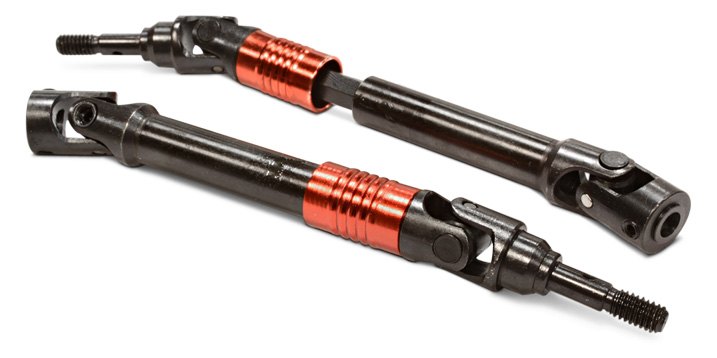
A driveshaft that contains a u-joint at both ends. As opposed to a 3-joint driveshaft, a 2-joint driveshaft is solid down its entire length with no center u-joint.
Driveshaft (3-Joint)
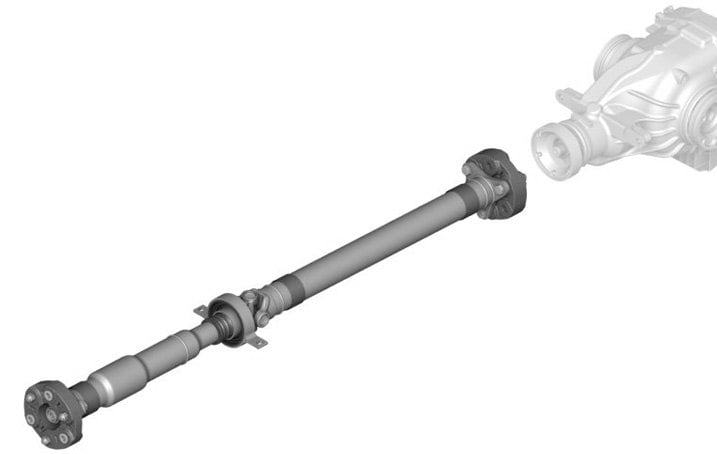
A driveshaft that contains a u-joint on each end, and one in the middle.
Ear
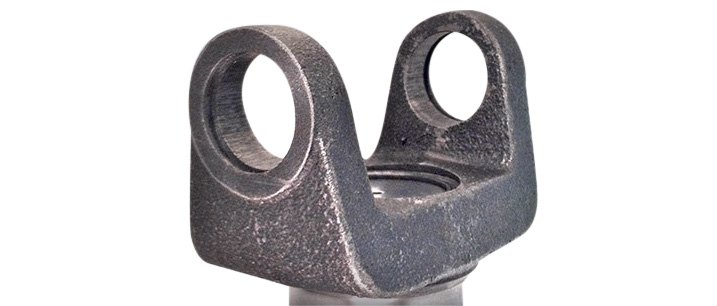
The round tops of the yoke edges. They will be equipped with round holes for the cross piece to fit into.
Grease Fitting
A small, round metal nipple that has a one-way opening in its center. This opening is used to pump fresh lubricating grease inside a cross piece. Some cross pieces have them (left pic), and some do not. Driveshaft yokes and other components may also be equipped with grease fittings (right pic). These are sometimes described as Zerk fittings.

Outside / Inside Lockup Measurement
This is a measurement of how far apart the ears of your yoke are. Outside lock (left picture) refers to the distance between the outer edges of the yoke ears, while inside lock (right picture) refers to the distance between the inner edges of the ears. These measurements can be useful in determining what the length of the prongs on the u-joint cross piece need to be.

Propeller Shaft (see Driveshaft)
Snap Rings
These are fasteners that hold bearing caps in place on the prongs of a cross piece by being installed in a groove. Once installed, the exposed portion of the snap ring acts as a shoulder to retain the bearing cap. For U-joints, there are inside snap rings and outside snap rings (see definitions below.)

Snap Rings (Inside)
Snap rings are sometimes positioned on the inside of the bearing cap. On this type of setup, the yoke ears will be smooth without any grooves cut into them (left pic). The picture on the right shows an inside snap ring installed.

Snap Rings (Outside)
If snap rings are positioned on the outside of the yoke, there will a groove cut into the surface of the yoke openings as seen in the left picture. The picture on the right shows an outside snap ring in use.

Tab
Some u-joints use tabs to take the place of snap rings (left pic). If the pinion yoke does not have tabs or snap rings anywhere, the opening will be machined flat and will use inside snap rings.

U-Bolt
U-bolts are u-shaped bracket pieces used to secure a cross piece onto a driveshaft yoke. They fit around the bearing caps, and bolt onto the yoke piece. U-bolts are different from U-joint straps, but serve a similar function.

U-Joint

Short for universal joint, a u-joint is a coupling that connects two shafts when their axes are at angles to one another, in a fashion so that both can rotate freely without excess friction. A u-joint is formed when cross pieces of one driveshaft yoke are linked to the cross pieces of another shaft yoke. U-joints can be located along driveshafts, 4WD transfer case shafts, and even axle shafts. U-joints are different in design from constant velocity joints. Also described as Cardan joints or Spicer Joints.
U-Joint Strap
U-joint straps are a style of bracket used to secure a cross piece to a driveshaft yoke. They fit around the bearing caps, and bolt onto the yoke piece. Straps are different from U-bolts, but serve a similar function.

Yoke
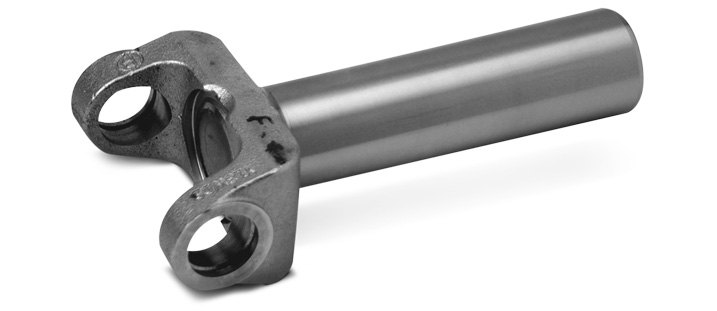
A yoke is fitted at the end of each rotating shaft, and typically has two ears (round openings) for a cross-piece to fit into. Two different rotating shafts can be conjoined with a u-joint, with two of the four cross piece prongs inserted into the yoke of each shaft.
Zerk Fitting - see Grease Fitting
Before You Order Your New Replacement U-joint
During the ordering process on our website, you may be prompted to enter certain measurements of your vehicle's components. Most of the time this won't be necessary, but in cases where the vehicle manufacturer made a revision during your model's production period, you will need to know your bearing cap diameter, and outside lockup measurement (see the above glossary for further explanation).
If you're unable to obtain the information needed about your own vehicle, you may need to take your driveshaft off in order to obtain measurements yourself before ordering. The section below will help you with the removal and installation process.
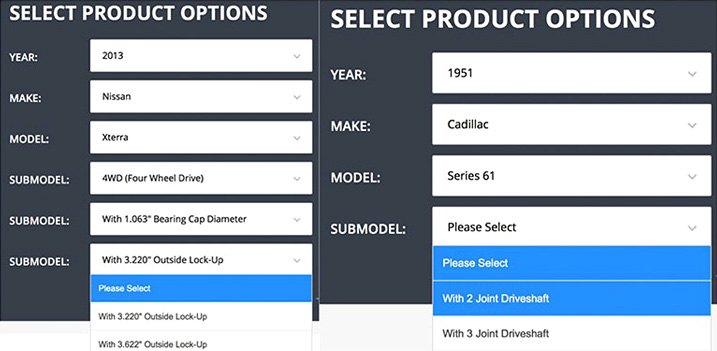
Replacement U-joint Product Options
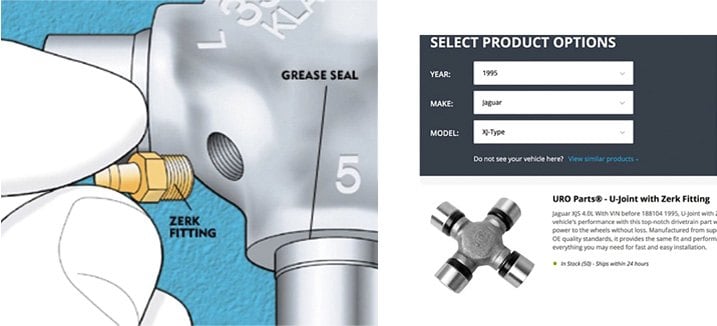
It's also important to note that grease (Zerk) fittings are not fitted on all replacement u-joints for every make and model vehicle, even if the words "Zerk Fitting" are in the main product title. Once you've entered your make, model, and year, the Product Options page will offer one or more variations to choose from. If one of those variations clearly states "Zerk Fitting" or "Grease Fitting" in its sub-title, then the part that arrives at your house will be so equipped.
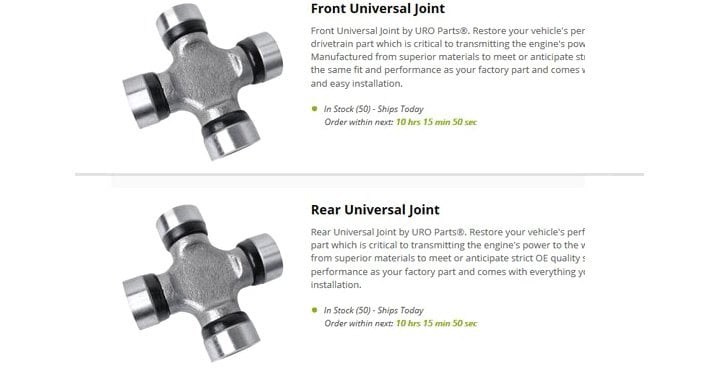
If choices for "Front" and "Rear" u-joints appear in Product Options, that means the one mounted closer to the front of the vehicle is a different size from the one at the rear, and should be selected according to what you need. Vehicles with 3-joint driveshafts may also see a "Center" u-joint offered. If front, rear, or center is not specified, then both ends of the driveshaft take the same size u-joint (this is so in most cases).
Replacing A Universal Joint
Step 1 - Remove Your Driveshaft
After raising your vehicle off the ground with a jack, jack stands, and wheel chocks, you'll need to remove your driveshaft from the vehicle by unbolting it at both ends. Depending on vehicle application, you may encounter one or both of the setups in the above picture. The left picture shows loosening of u-bolts or u-straps nuts.
NOTE! Before removal, mark the relative positions of the shaft and yoke, so that they can be reinstalled in the same "phase".
Using a heavy-duty screwdriver or small pry bar, pry the shaft forward (or rearward) until it's free of the other yoke not attached to the driveshaft, then pull it loose.
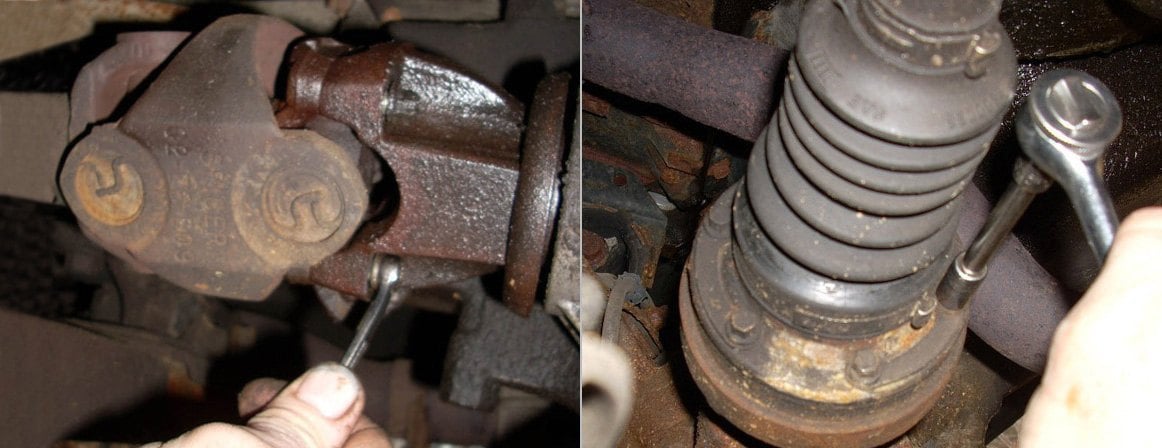
Step 2 - Remove The Snap Ring Clips From The Old U-Joint's Bearing Caps
Once you've removed your driveshaft from the vehicle, you'll need to remove the snap ring clips that hold the u-joint's cross piece to the yoke. You'll find specialized c-clip removal tools for inner snap rings (left pic) and needle-nose pliers for outer snap rings (right pic) in the pliers section of our website. Remove the snap rings by squeezing the ends together with the removal tool. If they are overly corroded and don't come free easily, soak the u-joint with some liquid penetrant.
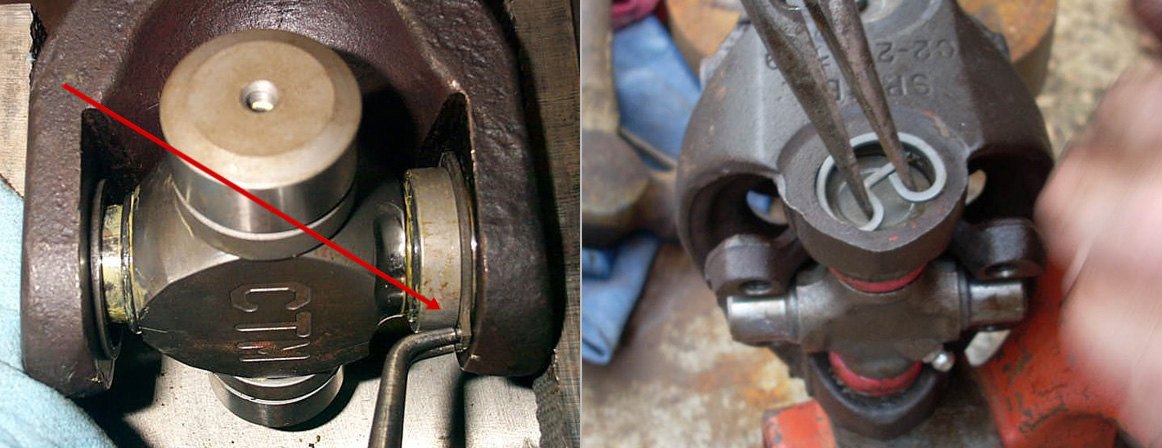
Step 3 - Tap The Old U-Joint Cross Piece Out Of The Yoke Ear

The next step is to tap the old u-joint cross piece out of the yoke ear that it's snugged into. A shop vise is an effective tool for holding the end of the yoke - once you've got it firmly held, use a properly sized punch (or even a socket) and a hammer to tap the joint far enough through so that the cross-piece drops out.
Step 4 - Remove Old Bearing Caps From The Cross Piece Ends
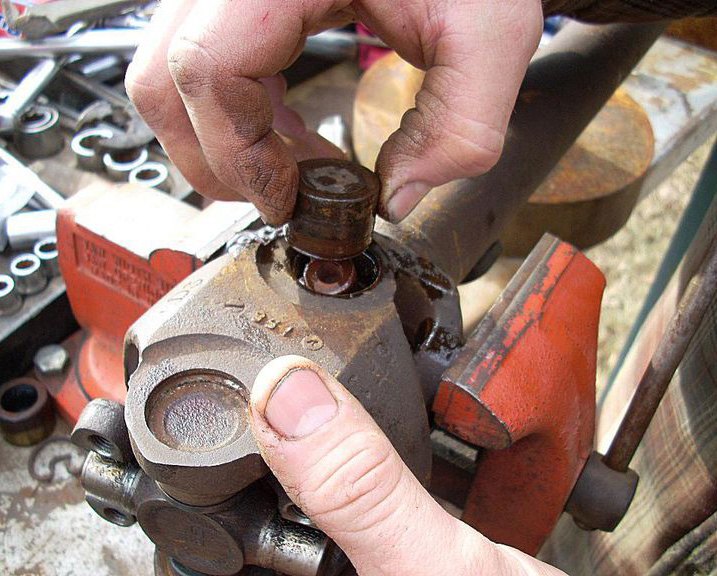
Once you've tapped the joint through the yoke ear, remove the bearing cup in order to fully remove the loose joint section.
Step 5 - Install Your New U-Joint Piece
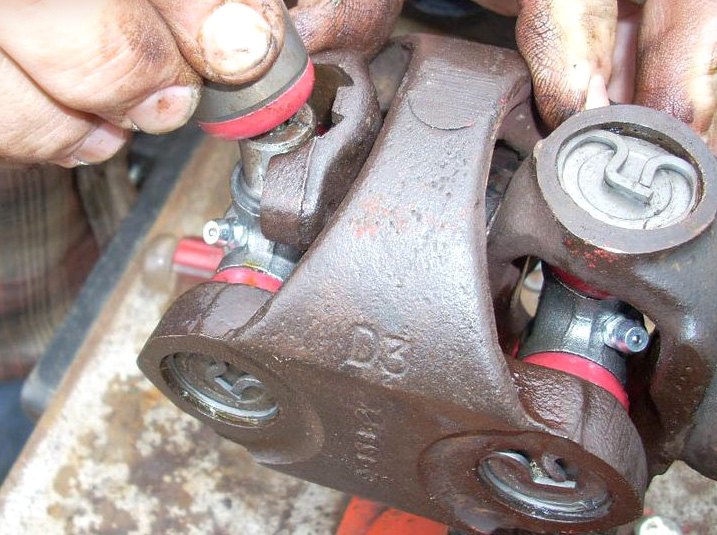
Pack the new bearing caps (that came with your kit) with u-joint lubricating grease, then fit them onto the prongs of your new cross piece. Depending on the design of your vehicle's yoke, you may be putting on the bearing cups before or after the new cross piece is inserted into the yoke. Coat all parts that make contact with one another with lubricating grease as well. Install the new clips in the same fashion you removed the old ones. You've now got a new universal joint installed, so go ahead and re-install your driveshaft.
All of the replacement u-joints we sell come with new cross pieces, bearing caps, and spring clip retainers. We've got a great selection of replacement u-joints for a wide range of American and import cars dating back to the 1940s from AC Delco and GMB. For Hyundai, Kia, and General Motors Daewoo-built 4wd vehicles, check out the Auto 7 Universal Joint. And if you've got a Jeep, we've got the Omix-Ada replacement U-Joint and U-Bolt Kit for Wranglers and CJs back to 1946. URO Parts' U-Joint with Zerk Fitting are designed for Land Rovers, Range Rovers, Jaguars, and Volvos, and the Dorman Driveshaft Repair Kit is for select Honda 4wd models back to 1997.

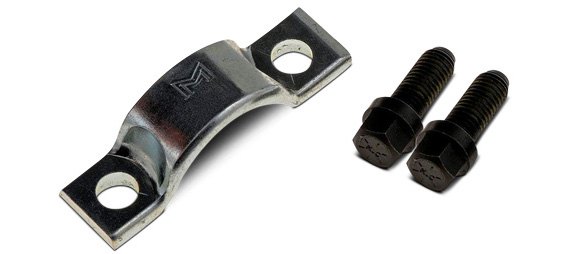
In most cases, u-bolts and u-joint straps on your vehicle's driveshaft yoke can be re-used. However, if new ones are preferable, we've also got replacements for a wide range of domestic and foreign cars. For u-joint straps, we've got quality kits from GMB and Dorman just to name a couple. We've also got a selection of u-bolt kits, grease fittings, and dust cap seals should you need those as well.

Replacing worn-out universal joints with new parts will make your ride smoother and safer. We recommend getting the job done sooner rather than later, as waiting for complete failure will simply take more parts out with it, making the repair that much more expensive.

